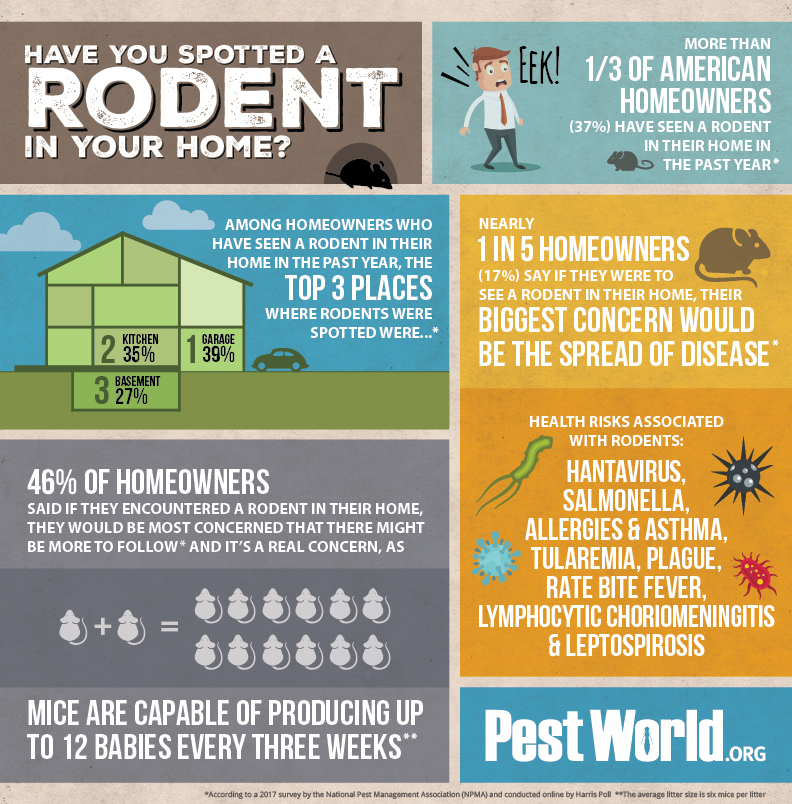Rat Control Understanding Typical Rodent Actions
Rat Control Understanding Typical Rodent Actions
Blog Article
Material Writer-TRUE Doyle
When it comes to rodent control, understanding typical rodent actions is essential to efficiently taking care of problems. Did you recognize that rodents have some remarkable nesting behaviors that might shock you? By exploring their complex actions, you can get beneficial insights into exactly how to deal with rodent problems in a much more calculated and efficient fashion. So, allow's unwind the mysteries behind these creatures' actions and discover just how to outmaneuver them in your rodent control initiatives.
Rat Nesting Behaviors
When observing rodents in their natural habitat, you'll observe that they actively choose products to construct their nests. Rats, such as computer mice and rats, are resourceful creatures that utilize a range of things like twigs, leaves, paper, and material to develop their homes. They're precise in their nest-building process, usually lining their nests with softer products like fur or plumes to produce a comfy atmosphere.
Rodents favor to build their nests in covert and safe locations to protect themselves and their young from killers. Typical nesting places include wall dental caries, attic rooms, basements, and also within insulation materials. By constructing their nests in these remote areas, rats can securely raise their spawn far from prospective threats.
It is important to comprehend the nesting practices of rats when carrying out control actions. By disrupting their nests or removing materials, you can dissuade rats from developing a presence in your home or home. Appropriate hygiene and sealing entrance points are additionally vital action in protecting against rodent invasions.
Rat Feeding Patterns
After observing rodents' nesting behaviors, it comes to be evident that their feeding patterns play an essential function in their daily lives and habits. Rats, including computer mice and rats, are opportunistic feeders, indicating they'll take in whatever food source is conveniently available. They're largely nocturnal creatures, favoring to forage for food during the cover of evening to prevent killers.
Rodents have a diverse diet, varying from grains, seeds, fruits, and veggies to insects, nuts, and even small animals. This versatility in their food options allows them to grow in numerous settings, including urban locations where human food resources are abundant.
Their feeding patterns aren't only driven by cravings however likewise by the need to stockpile food for times of deficiency. This actions is specifically obvious in preparation for winter season or when nesting. Rats are understood to hoard food in their nests or burrows, guaranteeing a continuous food supply. Recognizing their feeding patterns is crucial in executing efficient rodent control actions to interrupt their food sources and protect against infestations.
Rat Movement and Traveling
Rodents navigate their environments with agility and stealth, utilizing their keen senses to relocate promptly via their environments. https://www.wgrz.com/article/sports/outdoors/the-unique-farm-rescues-donkeys-destined-for-slaughter-who-in-turn-help-the-volunteers-who-care-for-them/71-d9a3401d-e9a1-423a-bf60-ae5201c12929 are skilled climbers, able to range wall surfaces and upright surfaces with ease. They can likewise squeeze through remarkably tiny openings, making it essential to seal any prospective access points in your house.
When it involves traveling, rats tend to follow acquainted paths, creating trails along wall surfaces or skirting the sides of spaces. They're creatures of habit, typically sticking to these established courses as they forage for food or explore their surroundings.
Rats are recognized for their nighttime practices, so you may hear them scooting about during the night as they look for food and water. Their movements fast and irregular, enabling them to dart in and out of view in the blink of an eye.
Recognizing exactly how rats move and travel can assist you recognize possible infestation locations in your home and take aggressive steps to stop these parasites from getting a foothold.
Conclusion
As you work to manage rodents in your home, bear in mind that comprehending their behavior is key. By identifying their nesting habits, feeding patterns, and motion, you can efficiently prevent infestations.
Together, by taking aggressive procedures to remove food sources and seal off access points, you can disrupt their acquainted paths and force them to look for new places, ultimately reducing the probability of rodent visibility in your home.
